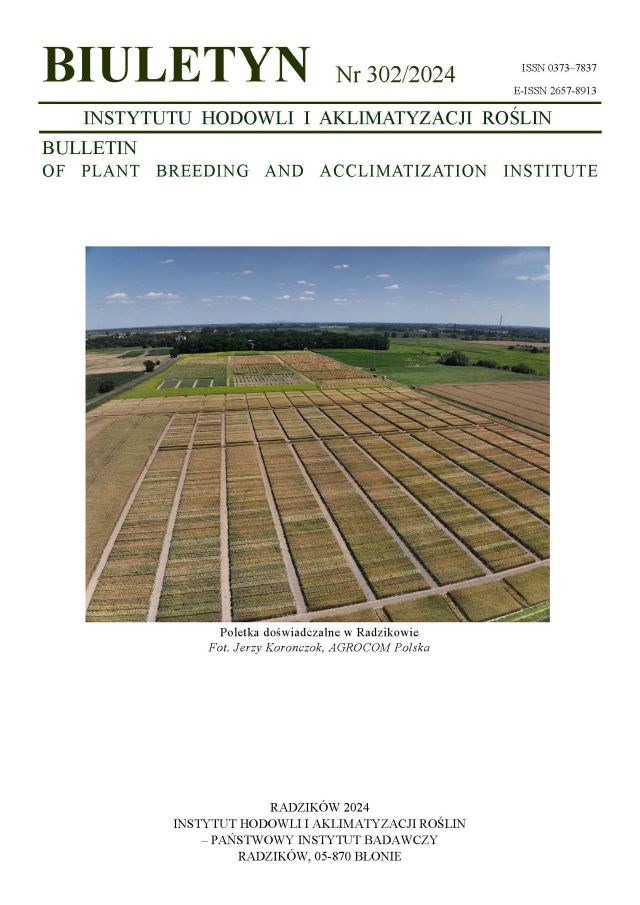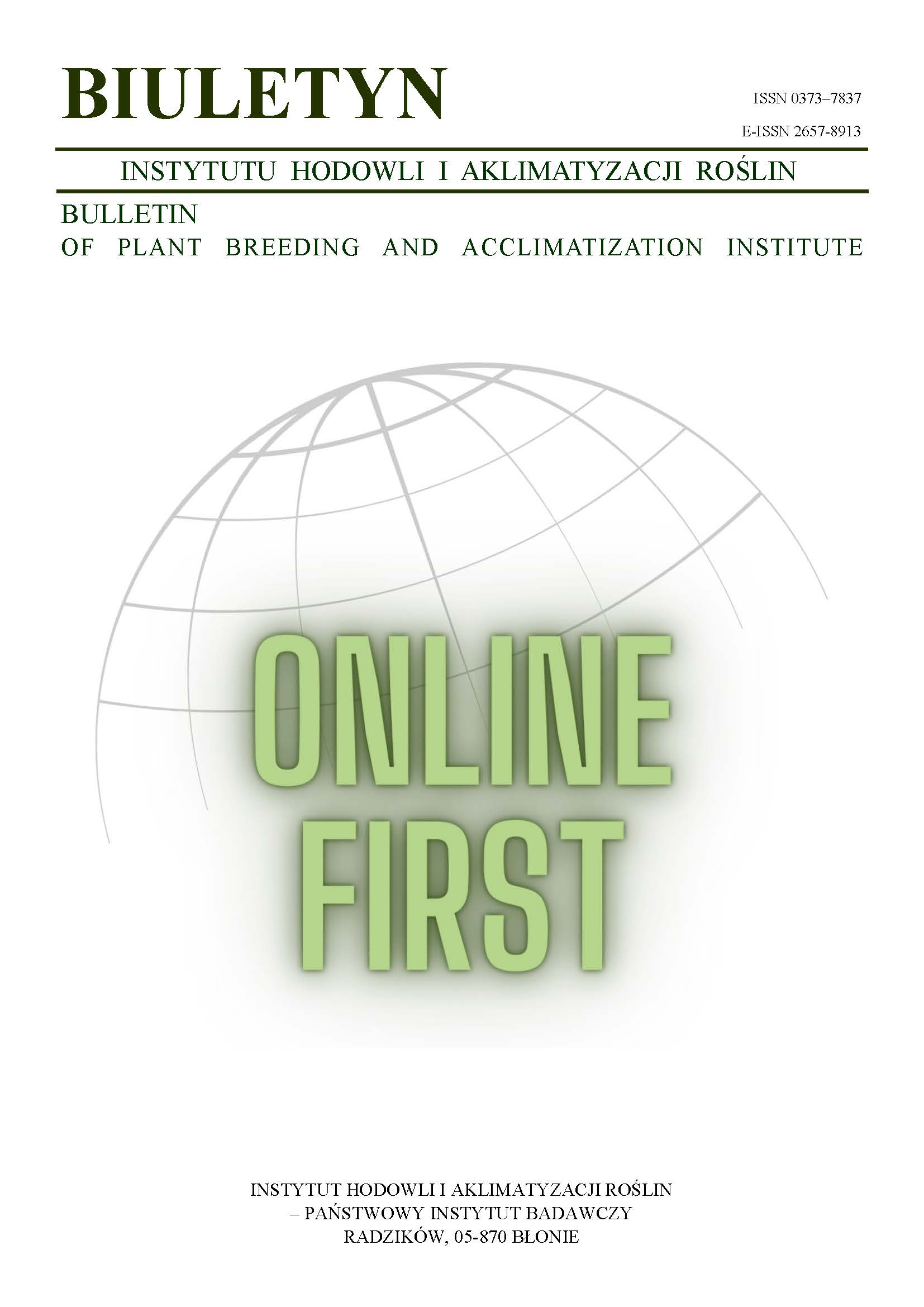Evaluation of Deschampsia ceaspitosa L. cv. Brok in turf mixtures with Poa pratensis L. under intensive maintenance and shade conditions
Sławomir Prończuk
s.pronczuk@ihar.edu.plInstytut Hodowli i Aklimatyzacji Roślin w Radzikowie (Poland)
Abstract
Deschampsia caespitosa cv. Brok was investigated in mixtures with Poa pratensis cultivars over three years under shade conditions. Monoculture of Brok and two standard mixtures commonly used one for sport purposes and the other one for park purposes, were used as a control for the comparison. The experiment was located in natural shade, near a building, and the following medium high turf maintenance regime factors were in operation: 157 kg N/ha, 22 mowing per year and irrigation during dry periods. The light reaching the plants was reduced by about 80%. The following characters were evaluated: general aesthetic aspect, shoot density, winterhardiness, wintergreenness, tolerance to yellow rust and to snow mould. It was found that the Brok mixtures’ characters were particularly good only in the first year of maintenance. Mean data (from 3 years of maintenance) of the general aesthetic aspect and shoot density for the mixtures with Brok were at the standard mixtures level or even below. The component cultivars of P. pratensis influenced significantly the value of turf characters. The tufted hairgrass Brok in monoculture showed low persistency for shoot density and low value of aesthetic aspect in autumn and winter (wintergreenness)
Keywords:
Deschampsia caespitosa, Poa pratensis, Tufted hairgrass, grass mixtures, Kentucky bluegrass, turf characters, shade conditionsReferences
Anonim 1995. Range of varieties. Barenbrug Holding, Oosterhout, The Netherlands: 56 pp.
Google Scholar
Anonim 1997. Turfgrass seed 1997. STRI, Bingley: 16 pp.
Google Scholar
Dudeck A. E., Peacock C. H. 1992. Shade and turfgrass, culture. In: Turfgrass. Agronomy Monograph 32: 271 — 282.
Google Scholar
Nasinec Ivo. 2003. Turf varieties for stress situations — results of breeding. Proc. XXXIII International Turfmeeting, Plzen: 7 — 10.
Google Scholar
Prończuk M., Zagdańska B. 1993. Effect of Microdochium nivale and low temperature on winter survival of perennial ryegrass. J. Phytopathology. 138: 1 — 8.
DOI: https://doi.org/10.1111/j.1439-0434.1993.tb01355.x
Google Scholar
Prończuk S., Prończuk M., Żyłka D. 1996. Comparison of aesthetic aspects of turfgrasses in sun and shade conditions at Radzików. Proc. 20th Eucarpia Fodder Crops and Amenity Grasses Section: 237 — 242.
Google Scholar
Prończuk S., Żurek G., Żyłka D., Prończuk M. 2001. Ocena śmiałka darniowego (Deschampsia ceaspitosa (L.) P. Beanr.) w różnym użytkowaniu trawnikowym. Zesz. Probl. Post. Nauk Rol. Z. 474: 113 — 121.
Google Scholar
Wójcik A. R., Laudański Z. 1989. Planowanie i wnioskowanie statystyczne w doświadczalnictwie. PWN, Warszawa: 1 — 318.
Google Scholar
Żurek G. 1999. Evaluation and characterization of wild ecotypes of tufted hairgrass (Deschampsia caespitosa L.) P. B. collected from East Poland. ECP/GR Forages working group: 7th Meeting, Portugal: 208 — 212.
Google Scholar
Authors
Sławomir Prończuks.pronczuk@ihar.edu.pl
Instytut Hodowli i Aklimatyzacji Roślin w Radzikowie Poland
Statistics
Abstract views: 59PDF downloads: 32
License
Copyright (c) 2004 Sławomir Prończuk

This work is licensed under a Creative Commons Attribution-ShareAlike 4.0 International License.
Upon submitting the article, the Authors grant the Publisher a non-exclusive and free license to use the article for an indefinite period of time throughout the world in the following fields of use:
- Production and reproduction of copies of the article using a specific technique, including printing and digital technology.
- Placing on the market, lending or renting the original or copies of the article.
- Public performance, exhibition, display, reproduction, broadcasting and re-broadcasting, as well as making the article publicly available in such a way that everyone can access it at a place and time of their choice.
- Including the article in a collective work.
- Uploading an article in electronic form to electronic platforms or otherwise introducing an article in electronic form to the Internet or other network.
- Dissemination of the article in electronic form on the Internet or other network, in collective work as well as independently.
- Making the article available in an electronic version in such a way that everyone can access it at a place and time of their choice, in particular via the Internet.
Authors by sending a request for publication:
- They consent to the publication of the article in the journal,
- They agree to give the publication a DOI (Digital Object Identifier),
- They undertake to comply with the publishing house's code of ethics in accordance with the guidelines of the Committee on Publication Ethics (COPE), (http://ihar.edu.pl/biblioteka_i_wydawnictwa.php),
- They consent to the articles being made available in electronic form under the CC BY-SA 4.0 license, in open access,
- They agree to send article metadata to commercial and non-commercial journal indexing databases.
Most read articles by the same author(s)
- Maria Prończuk, Sławomir Prończuk, Search of Kentucky bluegrass (Poa pratensis) cultivars and ecotypes for low maintenance turf , Bulletin of Plant Breeding and Acclimatization Institute: No. 248 (2008): Regular issue
- Sławomir Prończuk, Maria Prończuk, Evaluation of the response of perennial ryegrass (Lolium perenne L.) cultivars to temporary shading in turf maintenance , Bulletin of Plant Breeding and Acclimatization Institute: No. 248 (2008): Regular issue
- Danuta Martyniak, Sławomir Prończuk, Evaluation of cultivars and strains of chewings and strong creeping sub-species Festuca rubra L. with application of a synthetic index , Bulletin of Plant Breeding and Acclimatization Institute: No. 225 (2003): Special issue
- Maria Prończuk, Maciej Prończuk, Zbigniew Laudański, Sławomir Prończuk, Comparison of species and cultivars of Festuca spp. in many-years of turf maintenance , Bulletin of Plant Breeding and Acclimatization Institute: No. 225 (2003): Special issue
- Sławomir Prończuk, Maria Prończuk, Variability of turf characters of Poa pratensis L. cultivars under medium intensive turf maintenance , Bulletin of Plant Breeding and Acclimatization Institute: No. 225 (2003): Special issue
- Maria Prończuk, Sławomir Prończuk, Yellow rust — new infection threat for Kentucky bluegrass grown for turf and seed in Poland , Bulletin of Plant Breeding and Acclimatization Institute: No. 225 (2003): Special issue
- Elwira Stawiska, Sławomir Prończuk, The changes of floristic composition in turfgrass mixtures depending on cultivar components of a mixture , Bulletin of Plant Breeding and Acclimatization Institute: No. 225 (2003): Special issue














